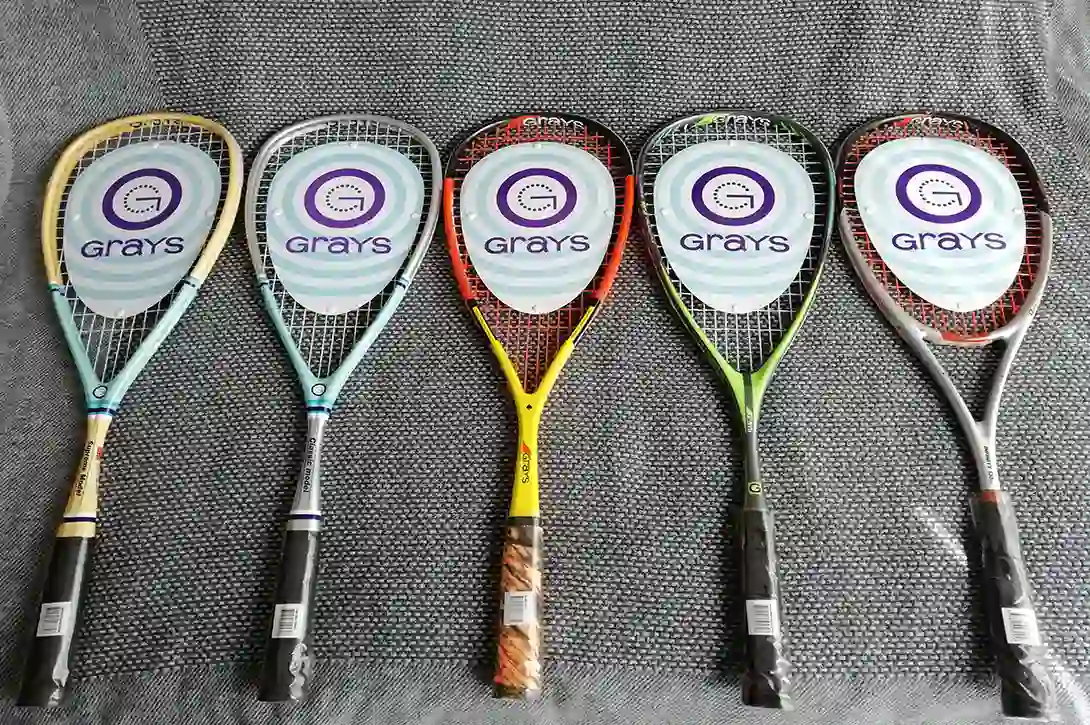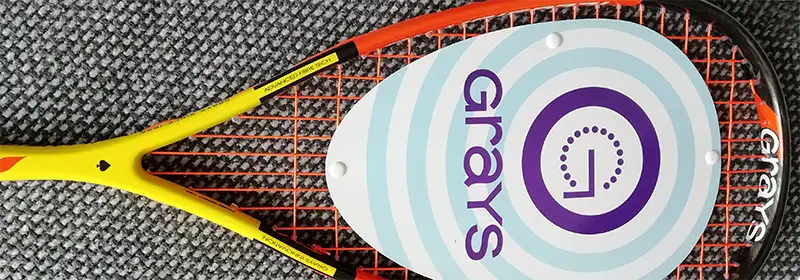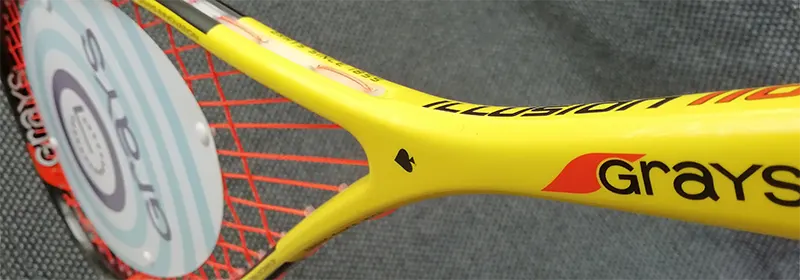26 June 2022 / 4-Min Read / Translate
As supplied this racket weighs 144grams and has a balance point of 370mm, making it quite head heavy. Once I put a grip on top of the one supplied, which is always too thin for me, it become 156 grams and has a 350mm balance point. Don’t worry too much about the difference in the name “110” and the actual weight “144” because manufacturers always use the base frame wight, i.e. no strings grip, grommets etc. The frame is quite wide giving it a very solid feel and making the racket quite stiff.
The strings are “Graytech” and seem acceptable. The tension was a little higher than I like, but that is expected and is the right thing to do – that way they can loosen over time.

You certainly couldn’t miss this racket if it were in a pile of other rackets. Some will like the bold colourway and design, whiles others won’t. I do like the yellow myself. I’m a little unclear on the addition of the spade symbol, but perhaps I am missing something?! I suppose it’s simple a love it or hate it design.
Of all the rackets I have tested recently, this one has the most power. That’s not an important aspect for me, as my game is bsed on control, but for some that could make the difference. Unlike some other powerful rackets, the Grays Illusion 110 never felt over-powerful, as in I could still control the ball. It impresses you the moment you first start to hit the ball.
This racket plays best when hit with a lot of slice or flat. Anything in between doesn’t seem to get the best from the frame. if you style of game is attacking the ball, then this racket should suit you.
Forgiveability describes a racket’s ability to respond when the ball is hit outside of the sweetspot. Remember, the sweetspot is the area of the strings where the response is the best. Some rackets have large sweetspots and other rackets have more intense, but smaller sweetspots. It’s a combination of frame, string and tension. The tight strings and quite rigid frame mean that the Grays Illusion 110 is not particularly forgiving.

No matter how light or well-balanced a racket is, a thick-framed, stiff racket will feel less manoeuvrable than a thinner flexible one. Maybe it’s just my perception, but I don’t feel this racket is suited to those “quick-fire” volleys at the front of the court. Over time, I became more comfortable with those types of shots, but at first it was definitely very strange. This racket works well when you put some power behind it, rather than simply hoping to block volleys.
If you have fairly good swing technique, then this racket works well in the back corners. However, hoping to flick the ball out won’t work. Shorter controlled swings get the best out of this racket.
If you are new to squash, Grays might not be a name you have heard much, especially in Europe. Grays are a very well-established brand going back many, many years, in fact it says on the frame: Since 1855!. Based in Australia for squash, they continue to make a range of rackets to suit all styles and most budgets. They make other sports equipment and are very well known for Hockey and Cricket.

Currently only available in Norway within Europe, but if you live in north America or Asia, you should have no trouble finding them. I would like to thank Stig from squashbutikken.no and Steve from squash.com.au for supplying all the Grays rackets. Go checkout their sites.
I feel this racket is suitable for three types of players. 1. Beginners: Even though this racket is not that forgiving on mishit shots, its natural power easily compensates for that. It’s also great with shorter swings and beginners would benefit from using shorter swings as they are easier to learn and repeat. 2. Attacking Volleyers: If you like to volley and rush your opponent, this racket is tailor-made for you. It works best with short swings and plenty of slice. and finally 3. Power Hitters: If you are the kind of person who loves to smack the skin off a squash ball, you will love this racket and this racket will love you. Like a sword forged for battle, this racket was designed to break squash balls!
Is it my favourite racket? No, but I am not one of the above mentioned playing styles. If I had to play with this racket, I would give it to a hard-hitting friend for a month and then I would be happier. When the time came to restring it, I would definitely string it at a lower tension than it came with, but that’s just my preference.